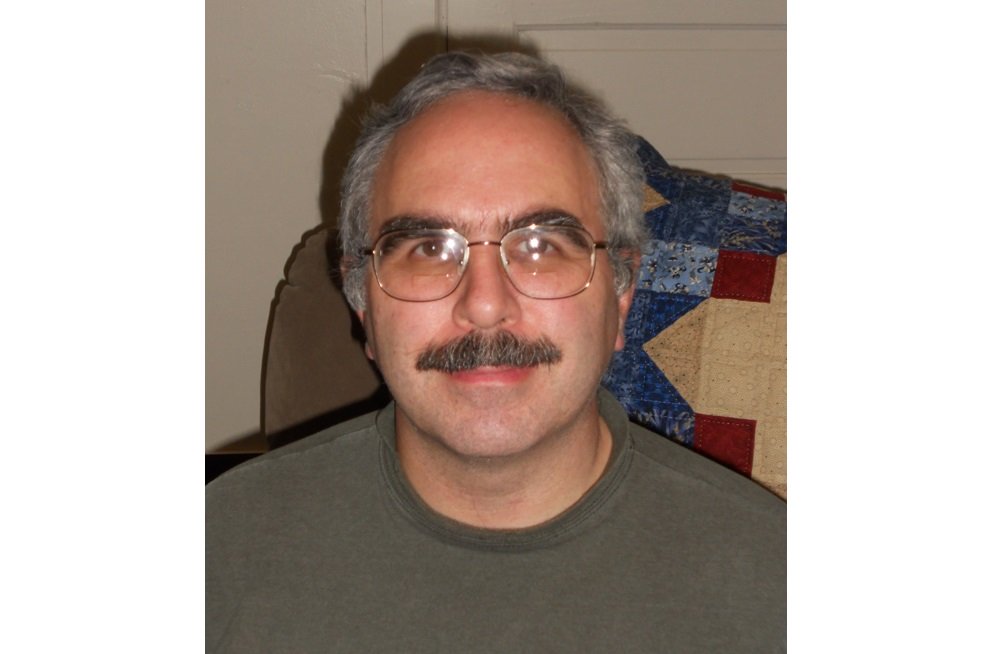
Creator Spotlight: Edward Gedeon
Today’s Wednesday Spotlight is with Edward Gedeon, creator of the webcomic Everyday Heroes, a story of a 9-5 working guy whose job happens to be being a superhero.
D: First off, tell me a bit about yourself. What do you do for work?
E: I’m an electronics engineer for a company that makes medical devices.
D: What about other hobbies outside of creating your webcomic?
E: I play golf, I’m always fixing up my house … oh, and I write song parodies. Over at Shaenon Garrity’s “Skin Horse”, I write a daily filk song based on that day’s strip. In six years, I’ve done over 2000 filks.
D: Have you been involved in any other creative endeavors?
E: I used to do community theater when I was single. I acted, built sets, drew posters, even directed once. Lately I’ve had to move around because of my job, so I haven’t been able to do theater for a few years. I’m hoping to get back to it someday.
D: How did you get started working on your webcomic/what inspired you to do so?
E: I’ve always been a compulsive doodler. I used to fill up the margins of my school notebook with random faces. When I first got out of college, I used to play D&D with a group of friends. We got pretty silly during our sessions, so I started drawing cartoons based on some of our private jokes.
One thing I remember from those days was the “What’s New?” comic in Dragon Magazine, done by Phil Foglio. A few years later, I came across another work by Foglio … namely “Girl Genius”, which was my first exposure to webcomics. In one of their blog posts, the Foglios mentioned another webcomic about another blonde, bespectacled, lady mad scientist; this led me to Shaenon Garrity’s “Narbonic”, which was probably the biggest influence on my own comic.
I had been playing with the idea of doing a traditional comic strip, reading articles by Scott Adams (Dilbert) and Greg Evans (Luann) on how to submit a package to a syndicate. Narbonic, on the other hand, gave me new ideas. I liked the idea of long story arcs, which led up to a dramatic climax, and then the story ended; it always bothered me in superhero comics how there had to be some sort of Cosmic Kablooie that reset history so the writers could start over and ignore continuity.
D: What was your inspiration for Everyday Heroes?
E: Actually, the idea came from the old “Looney Tunes” cartoon about the sheepdog and the wolf who came to work in the morning, punched in on the time clock, fought all morning, had lunch together, fought all afternoon, then clocked out at 5:00 and went home. I started with the idea of a nine-to-five superhero, living in the same neighborhood as his arch-nemesis, and treating his world-saving exploits like a typical job. Hero and villain have to interact with each other outside of their work, discuss neighborhood issues, deal with their kids (who go to the same school), etc. I try to mix superhero action in with domestic situations — for example, how do you deal with a neighbor who sends you an exploding cake?
D: What makes your story different than the average superhero plot, and why do you think that matters?
E: When I decided to make a long-form story, the focus started to shift to the hero’s daughter, and how she is dealing with her developing superpowers. She really doesn’t want to go out and risk her neck every day, she’d like to have a normal life, but she feels as if she’s being forced into a role she doesn’t want.
Another theme I bring up is how people don’t have to be defined by their pasts. I have characters who have screwed up in the past, and who are trying to turn their lives around. For example, the hero’s wife is a former villainess who spent two years in prison, after a botched job where her best friend got killed. There are other characters who are trying to overcome their previous mistakes, and I want to tell their stories while still fitting into the overall plot.
Also, I want to include a few un-powered characters who work to help others, not looking for recognition (real “everyday heroes” in the traditional sense).
D: What is your favorite part about producing Everyday Heroes?
E: Getting feedback, interacting with fans. It’s especially nice when I get a comment stating that a particular strip touched them in some way.
D: Any good stories relating to producing your comic?
E: One of my readers lives in Pennsylvania; when I got a job assignment there, we were able to get together for dinner and talk about art and comics in general. Later, she started her own webcomic (“Jenny Everywhere’s Infinite Quarktime” by Gwen Patton).
On another comic (Jacen Carpenter’s “Monstar”), I commented so frequently that he included me as a character in story!
I’ve also had the occasional crossover strip which includes characters from other webcomics. It gives me an excuse to contact other artists, network a bit, and get some new readers. Plus, playing with other characters is fun!
D: To you, what defines the ideal fan?
E: Someone who comments frequently, keeps the discussion polite, doesn’t offer “Hey u kno what u should do” suggestions, and who can give a little financial support to the comic creator.
D: Any advice to other part-time comic creators?
E: Promote your work! Advertise as much as you can, spread the word. Readers won’t come to your site unless they know about your comic. Also, network with other artists, make friends, and keep learning.
Thanks again for being willing to be interviewed, Ed 🙂